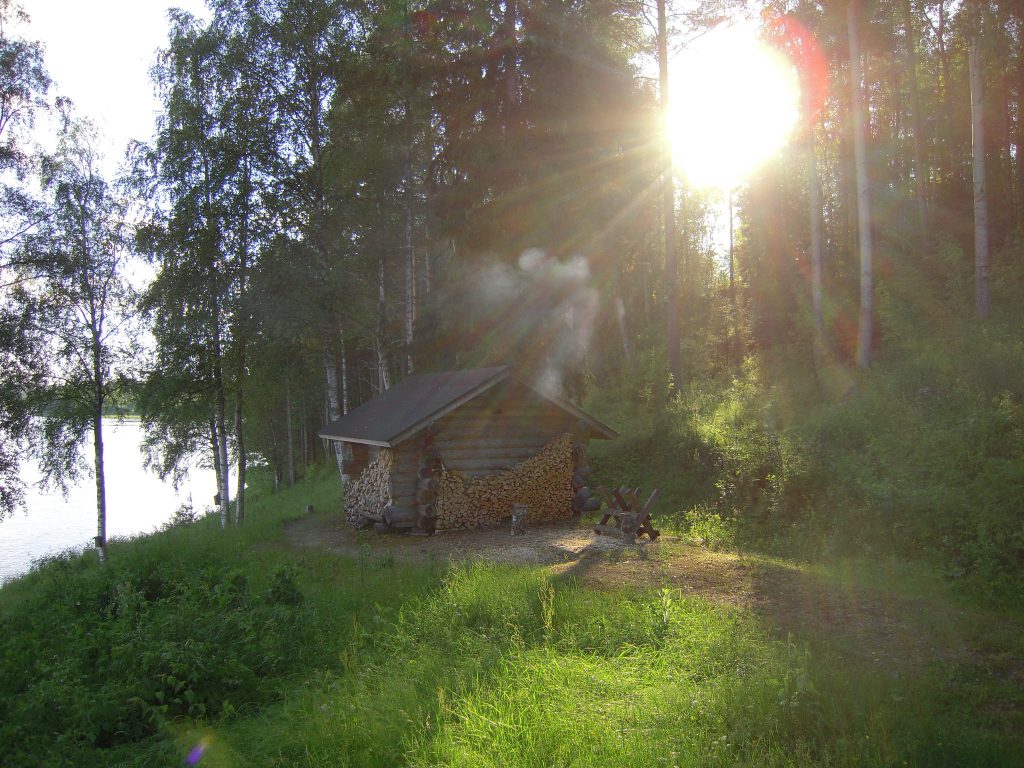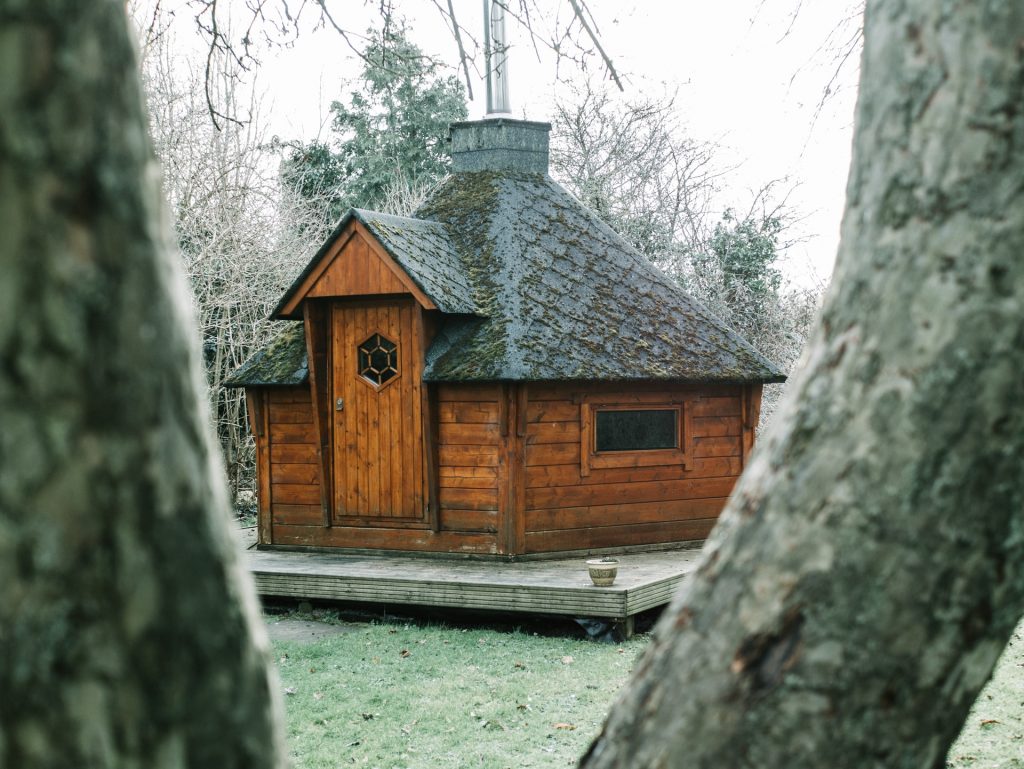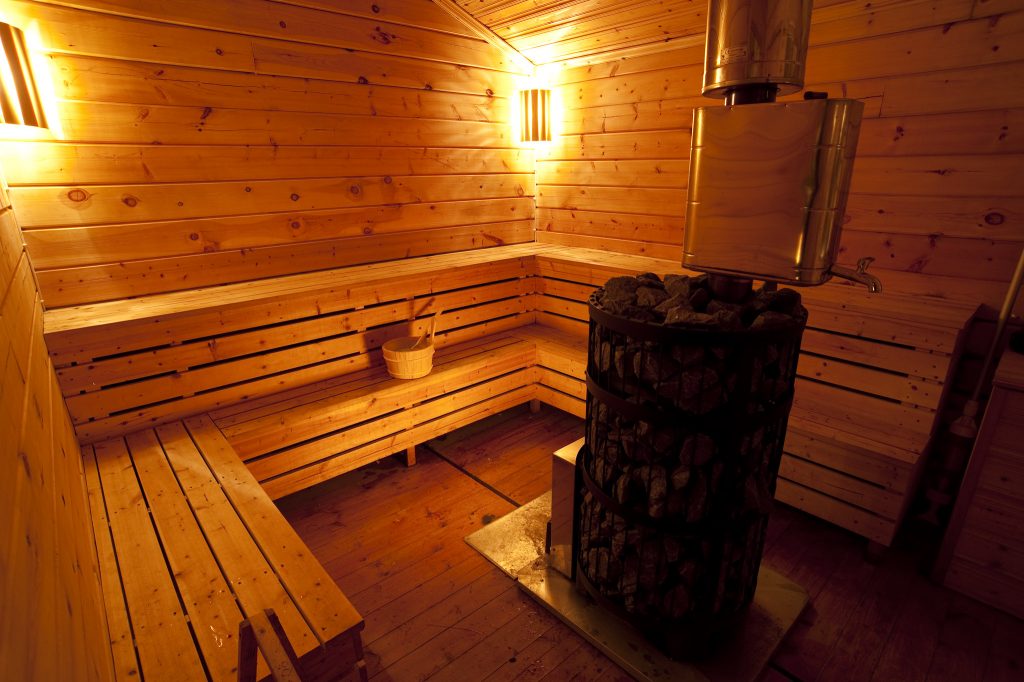How to build an outdoor sauna in your backyard.[read]
How to Build an Outdoor Sauna in Your Backyard
A concrete foundation is one of the most popular choices and also one of the most expensive bases for building your outdoor sauna. It offers more stability and durability and is rot-resistant. However, outdoor saunas with concrete foundations are more permanent than other options, so if you decide to take your sauna down in the future, you also have the big, pesky square slab of concrete to deal with as well.How to Build an Outdoor Sauna in Your Backyard
There's no better way to soothe sore muscles after a long hike or an exhilarating mountain ski session than with time spent in an outdoor sauna. The use of a sauna, correctly pronounced “sow-nah,” has been a way of life in Finland for over 2,000 years, and for a good reason!
Saunas are known for their tremendous health benefits, both physical and mental. The sauna room is also a perfect place to relax, rejuvenate and blow off some steam, literally and figuratively.
The traditional sauna, unlike a steam room that uses nearly 100% humidity, provides dry heat with very low humidity. Although saunas tend to be hotter than steam rooms, you feel the heat more intensely in the steam room. The soft, dry heat and lower humidity of a traditional sauna are meant to soothe and relax tired muscles, relieve stress, and promote a feeling of well-being.
If you're considering building your own sauna, whether it’s an outdoor home sauna in your backyard or on that perfect scenic spot at your mountain cabin, there are some things you will need to consider before tackling the job.
Should I Buy a Sauna Kit or Build It Entirely by Myself?
Building your own outdoor sauna can be as simple or as complicated as you make it. In its most basic form, an outdoor sauna is essentially an insulated shed with a heat source.
It’s considerably easier to buy a pre-assembled outdoor sauna kit than to design and build one from scratch. The North American Sauna Society is a great resource for sauna retailers in your area. Sauna kit prices generally start around $2,000 and can go up to $7,000. These premade options, from barrel style to the traditional Finnish sauna, will have you bathing in soul-soothing heat in no time. Also, instead of buying the whole thing, you can buy specific parts, such as the sauna roof kit.
While outdoor sauna kits are convenient, they don’t offer too many options for customization. If you're looking to create a unique and individualized outdoor sauna space for yourself, where can you begin? You can make a sauna design on your own, or you can find different DIY sauna plans online. Check out these sites for inspiration, and here are some DIY sauna ebooks you can purchase.
If you choose to build your own outdoor sauna, here are some things to consider.
Materials to Use for an Outdoor Sauna
From the foundation type and wood for the structure, to the insulation and heating source, the materials for your outdoor sauna are clearly the crucial components in your build. There are many different choices to make and things to consider when gathering your building materials.
Foundation
Wherever you choose to build your outdoor sauna, the ground needs to be fairly flat and level in order to successfully complete the job. You also need to make sure there is enough space for the foundation and base.
If you don’t already have an existing cement patio or deck, there are a few different options you can choose for your outdoor sauna foundation. The best choices are concrete, wood, or gravel.
Concrete Foundation
A concrete foundation is one of the most popular choices and also one of the most expensive bases for building your outdoor sauna. It offers more stability and durability and is rot-resistant. However, outdoor saunas with concrete foundations are more permanent than other options, so if you decide to take your sauna down in the future, you also have the big, pesky square slab of concrete to deal with as well.
Keep in mind, you most likely need to hire a licensed contractor or rent some pretty heavy equipment to get the job done right. Depending on your budget, material cost, and the location of your sauna, this may not be the best option.
Wood Foundation
Wood decking is a good option if you aren’t looking to build a permanent structure. In fact, it is considered temporary, so - depending on where you live - you won’t have to worry about building code inspectors knocking on your door.
Gravel Foundation
A gravel foundation requires very simple prep work, is easy to level, and will shed water runoff. Class 5 gravel is ideal as a sauna base.
Pier Foundation
For this type of foundation, you will need to dig several holes spaced appropriately apart. You will then place a pole, typically made of wood or steel, inside each hole and secure it with poured concrete. All poles need to be level and at the same height as each other. You can then place your structure on top of the pier foundation.
Wood
Outdoor saunas reach temperatures of 150 degrees or more. In order to build your sauna, you will need a material that is flexible and not easily damaged by moisture or warped by the heat. That is where wood comes in.
A sauna’s traditional look and feel isn’t just a stylistic choice. Wood remains relatively cool at high temperatures and is durable when well maintained. Plus, the wood interior of a sauna absorbs steam, stores heat, and releases soothing aromatics.
Most people build outdoor saunas out of cedar. Cedar is stable and resists warping under heat and humidity changes. It also has a low density making it a good insulator - quick to heat up and quick to cool down. This also makes the wood more comfortable to sit on and against. Cedar planks are not only naturally appealing, but they also give off a nice aroma. They’re anti-bacterial and anti-fungal, making them ideal for the moisture-filled environment of the outdoor saunas.
Other top choices for wood include basswood, poplar, and natural Canadian hemlock wood. Basswood and poplar are both hypoallergenic and odor-free. Hemlock is the most budget-friendly choice, but it's not as resistant to decay and can emit a slightly sour smell if the wood is too fresh.
Just remember, the major factors you should consider when choosing the wood for your outdoor sauna are resistance to decay, thermal comfort, appearance, and aroma. Of course, you also want to consider your budget. Choose wisely, knowing that the wooden structure is one of the sauna’s main components - the one that needs to withstand the test of time and the outdoor elements.
Insulation
When you want to build your own sauna, keep in mind that insulating is the wisest choice. Of course, many pre-built saunas, especially barrel shape saunas, don’t require insulation. Proper insulation will improve your sauna experience in these ways:
- Holds in Moisture. Warm, wet air will rush to cool, dry air. If a moist, hot room isn’t sealed properly, the wet air will stick to the wood paneling which is cooler in temperature. Proper insulation will combat the condensation and save your wood walls.
- Holds in Heat. An insulated sauna will reach higher temperatures at a quicker rate. For example, trying to warm up a non-insulated sauna is like trying to bake with the oven door open. The correct insulation and vapor barrier will keep the hot air inside the sauna.
It is advised to use R13-rated insulation for the walls and R22-R26 for the ceiling. Some of the best choices for material are standard fiberglass or more eco-friendly insulation like one made from recycled blue jeans. Once you have installed the insulation, you will also want to staple over all of it with an aluminum foil vapor barrier before adding the interior walls.
An aluminum foil vapor barrier is a necessary component for the proper construction and life of your sauna. It not only protects the structure by preventing moisture from absorbing into the interior walls, but it also helps to reflect radiant heat back into the room.
Heat Source
Clearly, you need a source of heat for your outdoor sauna, or it wouldn’t be a sauna. A sauna uses a small stove or heater that can either be electric, gas, or wood-burning.
The stove heats a pile of rocks (specifically chosen to withstand high temperatures without cracking and exploding) that absorb and continue to emit the heat throughout the interior of the sauna.
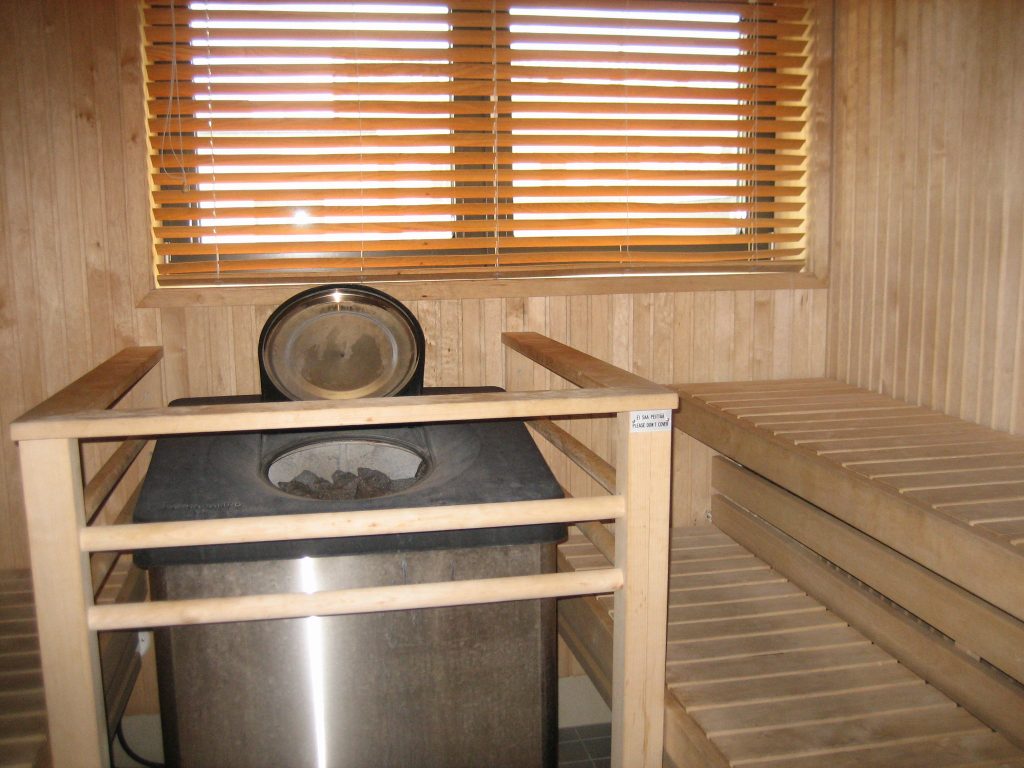
Infrared heaters for saunas have also gained in popularity. Instead of depending on hot rocks, an infrared sauna uses infrared light to create heat. Because of this source of heat, infrared saunas are believed to provide a more beneficial sauna experience. The infrared light penetrates deeper into bone and muscle tissue, providing all the benefits of sunlight without the nasty sunburn or fear of cancer.
If you are a sauna purist, you will want to use a wood-burning stove for your outdoor sauna, but it does have drawbacks like taking longer to warm up space and having to constantly monitor and stoke the wood-burning stoves. Electric and gas saunas are easier to maintain and quicker to heat. For example, the infrared heaters use up less electricity, heat up quickly, and are easier to maintain, making the infrared sauna more efficient than other saunas.
Construction Process
Depending on the type and style of outdoor sauna you are constructing, you will need to plan for various different things. These may include:
Windows
You may want to install at least one window, especially if you have a beautiful view to look at while enjoying your outdoor sauna. This will also allow natural light into the sauna.
Door
Pro tip: hang the door so it swings out for more room inside. Many people choose the tempered glass door because tempered glass performs better in environments with high temperatures and high moisture levels.
Air vents
No matter which of the heater options you pick, you'll need air vents.
Benches
Where do you want the benches placed? How long should they be? If you're planning to build an outdoor sauna for the whole family to enjoy, make sure to have enough room on the benches.
Lighting and switches
Where will they be installed? Tip: always hire a licensed electrician to complete any wiring. Modern outdoor saunas even have an FM radio and an LCD control panel for easier use.
Ceiling height
The ceiling height should be between 6’6” and 7’ as heat rises and you don’t need a lot of head space. You may even want to pitch your roof so it slopes lower by the heater.
Cold water source
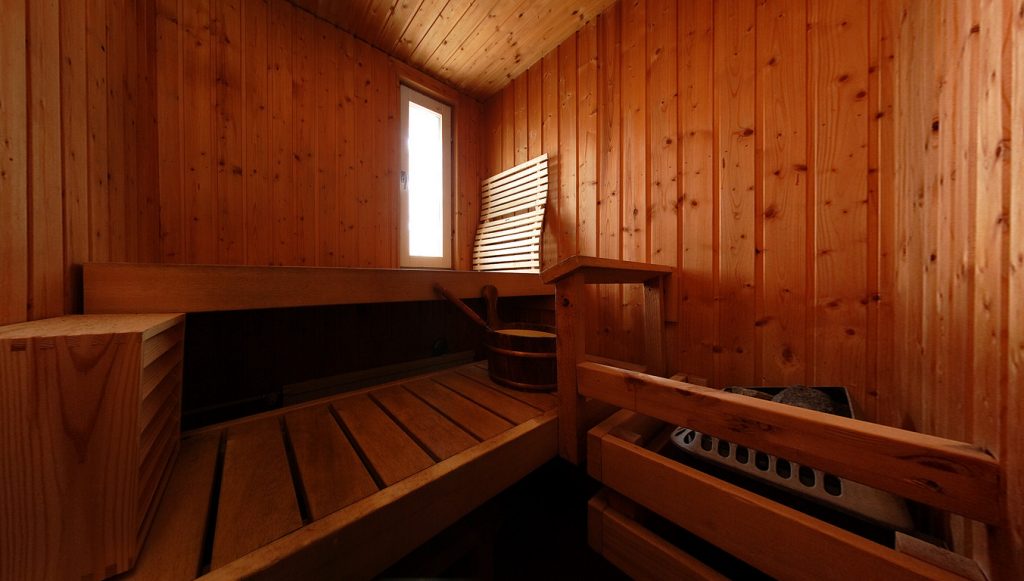
Another thing to consider when building your outdoor sauna is a cold water source. If you have access to a lake or pond that you can plunge into during or after sauna sessions, then you are good to go. Otherwise, think about installing an outdoor shower nearby or having a water bucket or tub of cold water at the ready outside the sauna building.
What are the Benefits of an Outdoor Sauna?
Outdoor saunas provide both physical and mental health benefits. They are first and foremost a place of relaxation, but they can offer so much more.
The body's natural painkillers, beta-endorphins and norepinephrine, are released to provide a feeling much like the runner's high. When you're in the outdoor sauna, the rate of blood circulation increases, the rate of breathing increases and the pulse rate quickens. Therefore, saunas are like mild exercise, or a cardiovascular workout for your heart, improving overall health. And yes - sauna sessions make you sweat and burn calories as well!
Benefits from saunas also include:
- Improved circulation
- Lowered blood pressure
- Stress relief
- Glowing skin
- Stronger immune system
- Muscle relaxation
- Improved mood
General Safety Rules in a Sauna
It’s important to remember that the heat of a sauna is not always beneficial for some. There are things to consider before and during a sauna session.
Do not use drugs or alcohol. Do not stay in a sauna for more than 20 minutes when first starting out. Do not remain in the sauna if you feel dizzy, faint, or short of breath.
Consult your doctor have heart or lung problems. Remember to be well hydrated before and after a sauna session as you will sweat excessively. And, as an extra precautionary measure, consider installing guard rails or handles inside your sauna.
Do Your Thing with KÜHL
Building your own outdoor sauna in the backyard doesn't have to be difficult - you just need to make sure you have it planned out in advance. Choosing the right materials, insulation, and heater options will ensure maximum comfort and make your outdoor sauna the perfect place to sit back and relax.
Whether you use the pre-assembled sauna kit or make it an entirely DIY project, having an outdoor sauna in your yard or next to your cabin is an invaluable asset for both your mental and physical health. So, grab some top-notch craft pants, roll up your sleeves and get to work!
Источники:
Источник - https://www.kuhl.com/borninthemountains/how-to-build-an-outdoor-sauna-in-your-backyard

